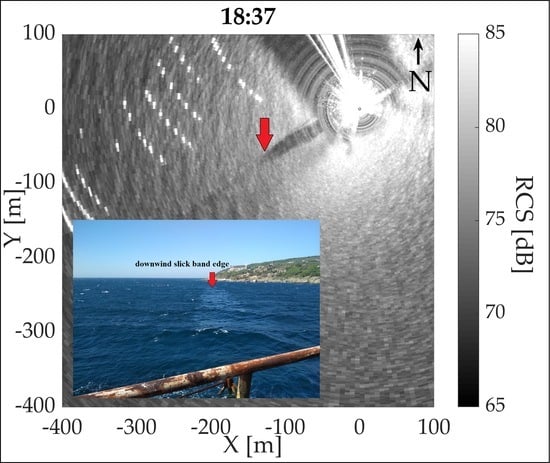On Capabilities of Tracking Marine Surface Currents Using Artificial Film Slicks
Abstract
1. Introduction
2. Materials and Methods
2.1. Experimental Technique
2.2. Apparatus and Data Processing
3. Results and Discussion
3.1. Environmental Conditions
3.2. Slick Band Formation
3.3. Slick Band Direction (Azimuth)
3.4. Slick Band Width
3.5. Retrieval of Marine Currents
4. Conclusions
Supplementary Materials
Author Contributions
Funding
Acknowledgments
Conflicts of Interest
References
- Gade, M.; Byfield, V.; Ermakov, S.; Lavrova, O.; Mitnik, L. Slicks as indicators for marine processes. Oceanography 2013, 26, 138–149. [Google Scholar] [CrossRef]
- Da Silva, J.C.B.; Ermakov, S.A.; Robinson, I.S.; Jeans, D.R.G.; Kijashko, S.V. Role of surface films in ERS SAR signatures of internal waves on the shelf 1. Short-period internal waves. J. Geophys. Res. 1998, 103, 8009–8031. [Google Scholar] [CrossRef]
- Ermakov, S.A.; Panchenko, A.R.; Salashin, S.G. Film slicks on the sea surface and some mechanisms of their formation. Dyn. Atmos. Oceans 1992, 16, 279–304. [Google Scholar] [CrossRef]
- Lavrova, O.Y.; Mityagina, M.I.; Kostianoy, A.G. Satellite Methods for Detecting and Monitoring Marine Zones of Ecological Risk; ISR RAS: Moscow, Russia, 2016; pp. 101–306. [Google Scholar]
- Johannessen, J.A.; Shuchman, R.A.; Digranes, G.; Lyzenga, D.R.; Wackerman, C.; Johannessen, O.M.; Vachon, P.W. Coastal ocean fronts and eddies imaged with ERS 1 synthetic aperture radar. J. Geophys. Res. 1996, 101, 6651–6667. [Google Scholar] [CrossRef]
- Ivanov, A.Y.; Ginzburg, A.I. Oceanic eddies in synthetic aperture radar images. J. Earth Syst. Sci. 2002, 111, 281–295. [Google Scholar] [CrossRef]
- Lavrova, O.; Serebryany, A.; Bocharova, T.; Mityagina, M. Investigation of fine spatial structure of currents and submesoscale eddies based on satellite radar data and concurrent acoustic measurements. In Remote Sensing of the Ocean, Sea Ice, Coastal Waters, and Large Water Regions; International Society for Optics and Photonics: Edinburgh, UK, 2012; Volume 8532. [Google Scholar]
- Lavrova, O.Y.; Mityagina, M.I.; Sabinin, K.D.; Serebryany, A.N. Study of hydrodynamic processes in the shelf zone based on satellite data and subsatellite measurements. Sovrem. Problemy Distantsionnogo Zondirovaniya Zemli iz Kosmosa 2015, 12, 98–129. [Google Scholar]
- Lavrova, O.Y.; Sabinin, K.D. Fine spatial structure of flows on satellite radar image of the Baltic Sea. Doklady Earth Sci. 2016, 467, 427–431. [Google Scholar] [CrossRef]
- Espedal, H.A.; Johannessen, O.M.; Johannessen, J.A.; Dano, E.; Lyzenga, D.R.; Knulst, J.C. COASTWATCH’95: ERS 1/2 SAR detection of natural film on the ocean surface. J. Geophys. Res. 1998, 103, 24969–24982. [Google Scholar] [CrossRef]
- Ermakov, S.; Kapustin, I.; Sergievskaya, I. Remote sensing and in situ observations of marine slicks associated with inhomogeneous coastal currents. In Remote Sensing of the Ocean, Sea Ice, Coastal Waters, and Large Water Regions; International Society for Optics and Photonics: Prague, Czech Republic, 2011; Volume 8175. [Google Scholar]
- Ochadlick, J.A.R.; Cho, P.; Evans-Morgis, J. Synthetic aperture radar observations of currents colocated with slicks. J. Geophys. Res. 1992, 97, 5325–5330. [Google Scholar] [CrossRef]
- Zhurbas, B.M. The principle mechanisms of oil distribution in the sea. In Mechanics of Fluid and Gas; VINITI: Moskow, Russia, 1978; pp. 144–159. [Google Scholar]
- Fingas, M. Oil Spill Science and Technology, 2nd ed.; Elsevier, Gulf Professional Publishing: Edmonton, AB, Canada, 2016; pp. 419–453. [Google Scholar]
- Wu, J. Sea-surface drift currents induced by wind and waves. J. Geophys. Res. 1983, 13, 1441–1451. [Google Scholar] [CrossRef]
- Malinovsky, V.V.; Dulov, V.A.; Korinenko, A.E.; Bol’shakov, A.N.; Smolov, V.E. Field investigations of the drift of artificial thin films on the sea surface. Izvestiya Atmos. Ocean. Phys. 2007, 43, 103–111. [Google Scholar] [CrossRef]
- Ermakov, S.; Kapustin, I.; Molkov, A.; Leshev, G.; Danilicheva, O.; Sergievskaya, I. Remote sensing of evolution of oil spills on the water surface. In Remote Sensing of the Ocean, Sea Ice, Coastal Waters, and Large Water Regions; International Society for Optics and Photonics: Berlin, Germany, 2018; Volume 10784. [Google Scholar]
- Halverson, M.; Pawlowicz, R.; Chavanne, C. Dependence of 25-MHz HF Radar Working Range on Near-Surface Conductivity, Sea State, and Tides. J. Atmos. Ocean. Technol. 2017, 34, 447–462. [Google Scholar] [CrossRef]
- Mouche, A.A.; Collard, F.; Chapron, B.; Dagestad, K.F.; Guitton, G.; Johannessen, J.A.; Kerbaol, V.; Hansen, M.W. On the Use of Doppler Shift for Sea Surface Wind Retrieval From SAR. IEEE Trans. Geosci. Remote Sens. 2012, 50, 2901–2909. [Google Scholar] [CrossRef]
- Ermakov, S.A.; Kapustin, I.A.; Sergievskaya, I.A. On peculiarities of scattering of microwave radar signals by breaking gravity-capillary waves. Radiophys. Quantum Electron. 2012, 55, 239–250. [Google Scholar] [CrossRef]
- Ermakov, S.A.; Kapustin, I.A.; Sergievskaya, I.A. Tank Study of Radar Backscattering from Strongly Nonlinear Water Waves. Bull. Russ. Acad. Sci. Phys. 2010, 74, 1695–1698. [Google Scholar] [CrossRef]
- Gade, M.; Alpers, W.; Ermakov, S.A.; Huehnerfuss, H.; Lange, P. Wind-wave tank measurements of bound and freely propagating short gravity-capillary waves. J. Geophys. Res. 1998, 103, 21697–21709. [Google Scholar] [CrossRef]
- Plant, W.J. A model for microwave Doppler sea return at high incidence angles: Bragg scattering from bound, tilted waves. J. Geophys. Res. 1997, 102, 21131–21146. [Google Scholar] [CrossRef]
- Ermoshkin, A.V.; Kapustin, I.A. Investigation of surfactant spreading over the surface of internal fresh-water reservoir using marine navigation radar. Sovrem. Probl. Distantsionnogo Zondirovaniya Zemli iz Kosmosa 2015, 12, 72–79. [Google Scholar]
- Ermakov, S.A.; Lavrova, O.Y.; Kapustin, I.A.; Makarov, E.V.; Sergievskaya, I.A. Investigation of geometry of film slicks on the sea surface from satellite radar observations. Sovrem. Probl. Distantsionnogo Zondirovaniya Zemli iz Kosmosa 2016, 13, 97–105. [Google Scholar] [CrossRef]
- Ermakov, S.A.; Ermoshkin, A.V.; Kapustin, I.A. On the effect of film slick compression. Sovrem. Probl. Distantsionnogo Zondirovaniya Zemli iz Kosmosa 2017, 14, 288–294. [Google Scholar] [CrossRef]
- Ermakov, S.A.; Lavrova, O.Y.; Kapustin, I.A.; Ermoshkin, A.V.; Molkov, A.A.; Danilicheva, O.A. On the “comb” structure of the edges of slicks on the sea surface. Sovrem. Probl. Distantsionnogo Zondirovaniya Zemli iz Kosmosa 2018, 15, 208–217. [Google Scholar] [CrossRef]
- Ermakov, S.A.; Sergievskaya, I.A.; da Silva, J.C.; Kapustin, I.A.; Shomina, O.V.; Kupaev, A.V.; Molkov, A.A. Remote Sensing of Organic Films on the Water Surface Using Dual Co-Polarized Ship-Based X-/C-/S-Band Radar and TerraSAR-X. Remote Sens. 2018, 10, 1097. [Google Scholar] [CrossRef]
- Sergievskaya, I.A.; Ermakov, S.A.; Ermoshkin, A.V.; Kapustin, I.A.; Molkov, A.A.; Danilicheva, O.A.; Shomina, O.V. Modulation of Dual-Polarized X-Band Radar Backscatter Due to Long Wind Waves. Remote Sens. 2019, 11, 423. [Google Scholar] [CrossRef]
- Fay, J.A. The spread of oil slicks on a calm sea. In Oil on the Sea; Hoult, D.P., Ed.; Plenum Press: New York, NY, USA, 1969; pp. 53–63. [Google Scholar]
- Ermakov, S.A.; Kijashko, S.V. Laboratory study of the damping of parametric ripples due to surfactant films. In Marine Surface Films; Gade, M., Huehnerfuss, H., Korenovski, G., Eds.; Springer: Berlin/Heidelberg, Germany, 2006; pp. 113–128. [Google Scholar]
- Elfouhaily, T.; Chapron, B.; Katsaros, K.; Vandemark, D. A unified directional spectrum for long and short wind-driven waves. J. Geophys. Res. 1997, 102, 15781–15796. [Google Scholar] [CrossRef]
- Mityagina, M.I.; Lavrova, O.Y.; Karimova, S.S. Multi-sensor survey of seasonal variability in coastal eddy and internal wave signatures in the north-eastern Black Sea. Int. J. Remote Sens. 2010, 31, 4779–4790. [Google Scholar] [CrossRef]
- Barger, W.R.; Daniel, W.H.; Garrett, W. Surface chemical properties of banded slicks. Deep Sea Res. 1974, 21, 83–89. [Google Scholar] [CrossRef]
- Frew, N.M.; Nelson, R.K. Scaling of marine microlayer film surface-pressure isotherms using chemical attributes. J. Geophys. Res. 1992, 97, 5291–5300. [Google Scholar] [CrossRef]
- Gade, M.; Alpers, W.; Huehnerfuss, H.; Masuko, H.; Kobayashi, T. Imaging of biogenis and anthropogenic ocean surface films by the multifrequency/multipolarization SIR_C/X-SAR. J. Geophys. Res. 1998, 103, 18851–18866. [Google Scholar] [CrossRef]
- Alpers, W.; Huehnerfuss, H. The damping of ocean waves by surface films: A new look at an old problem. J. Geophys. Res. 1989, 94, 6251–6266. [Google Scholar] [CrossRef]
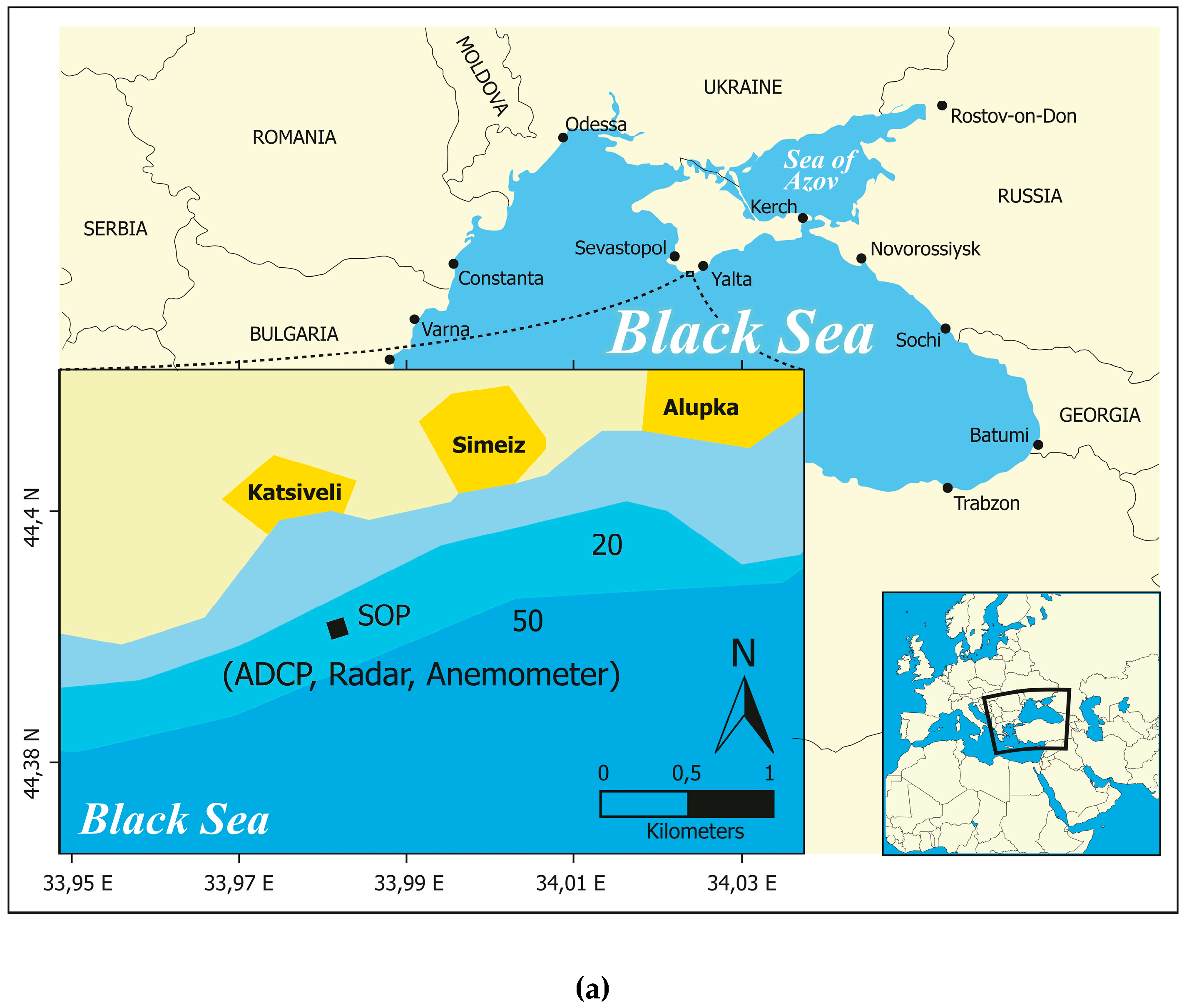
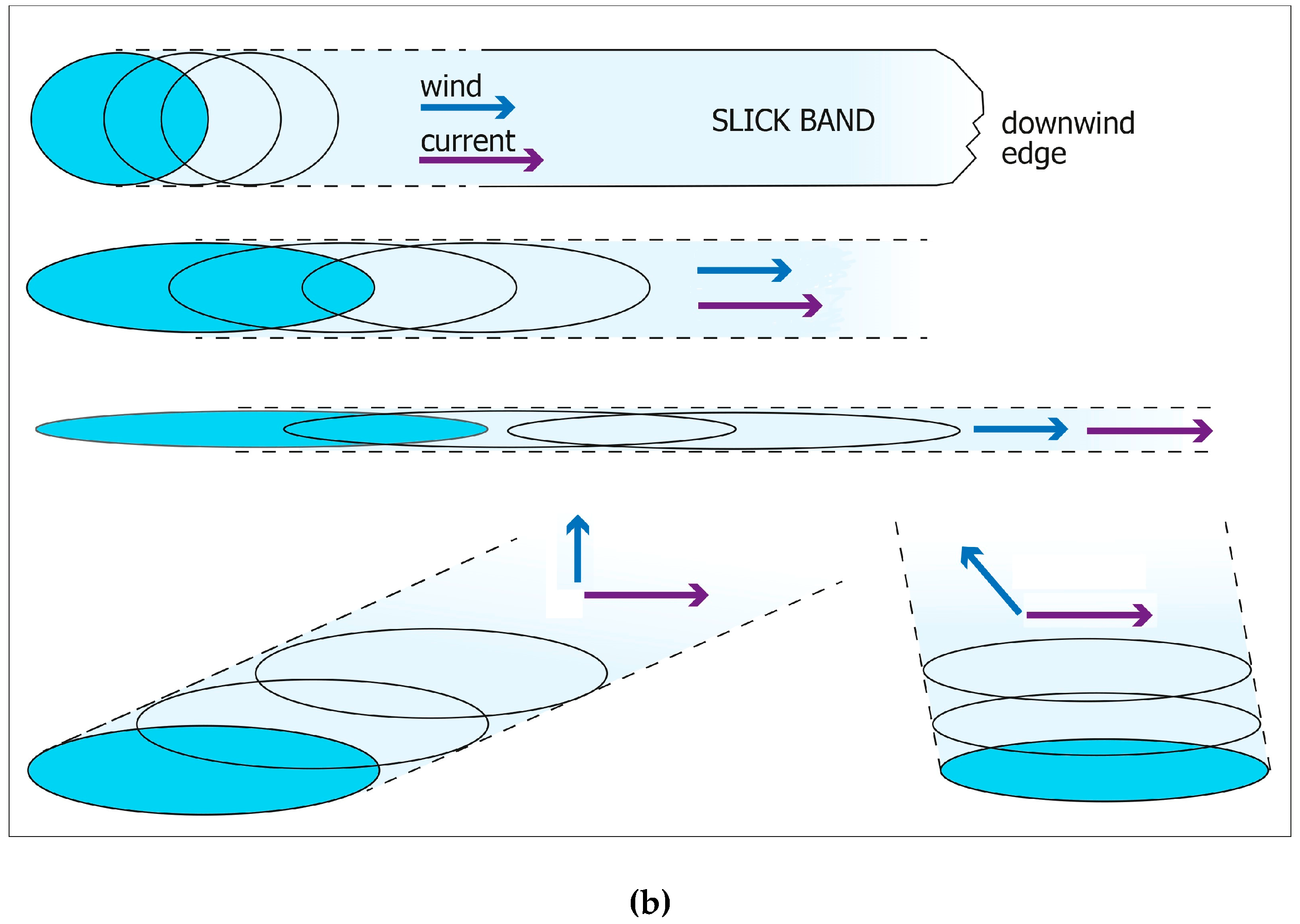
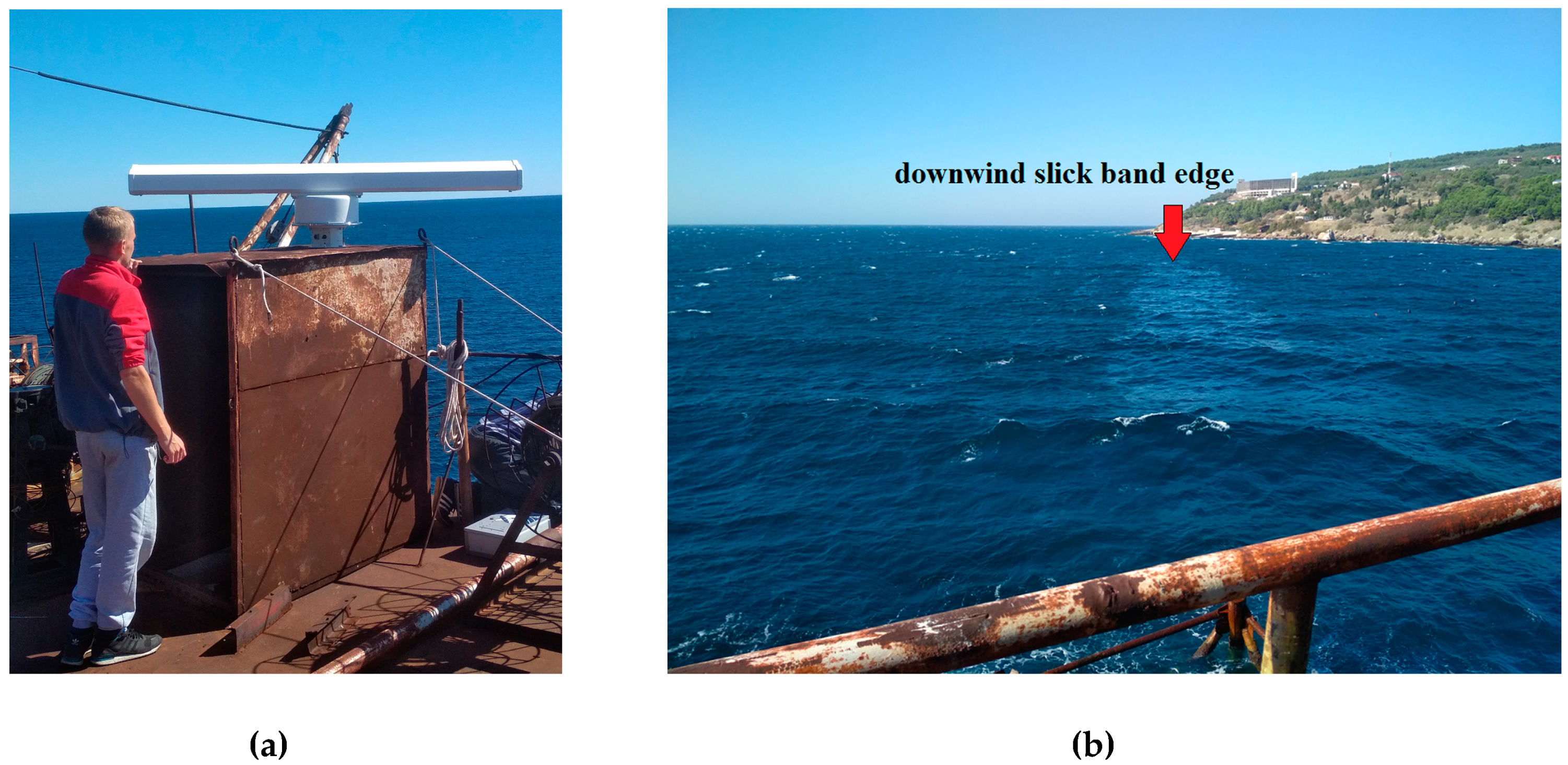
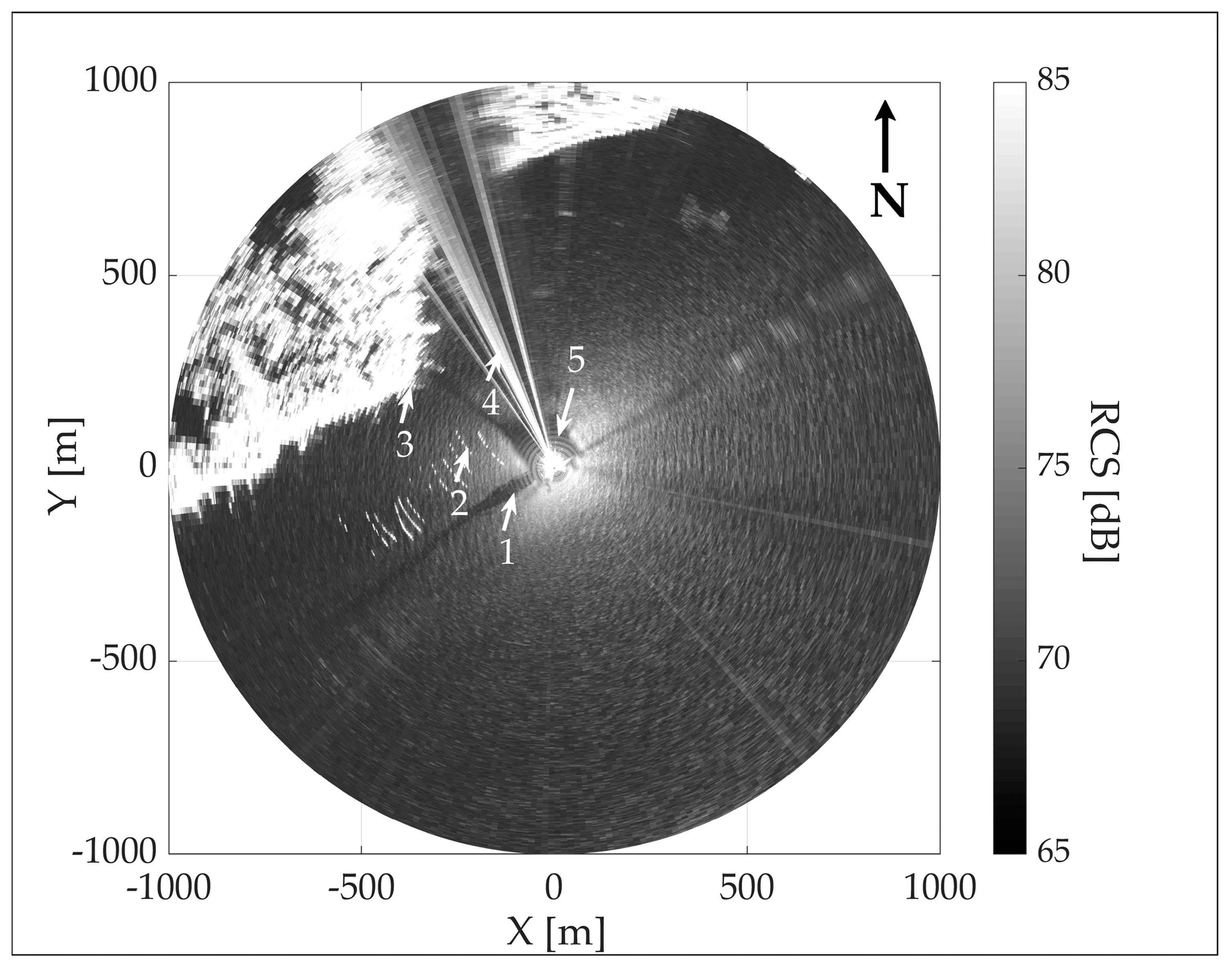
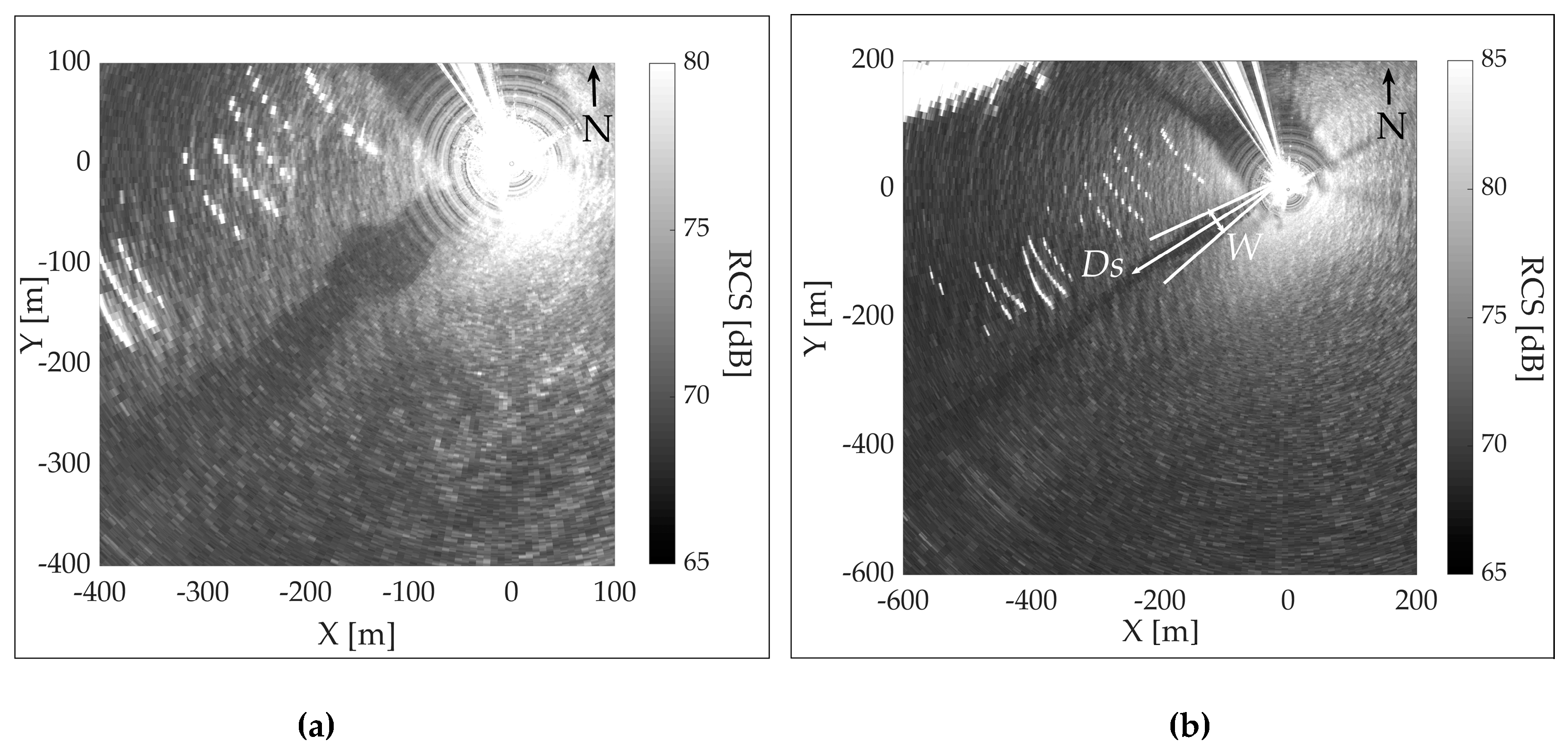
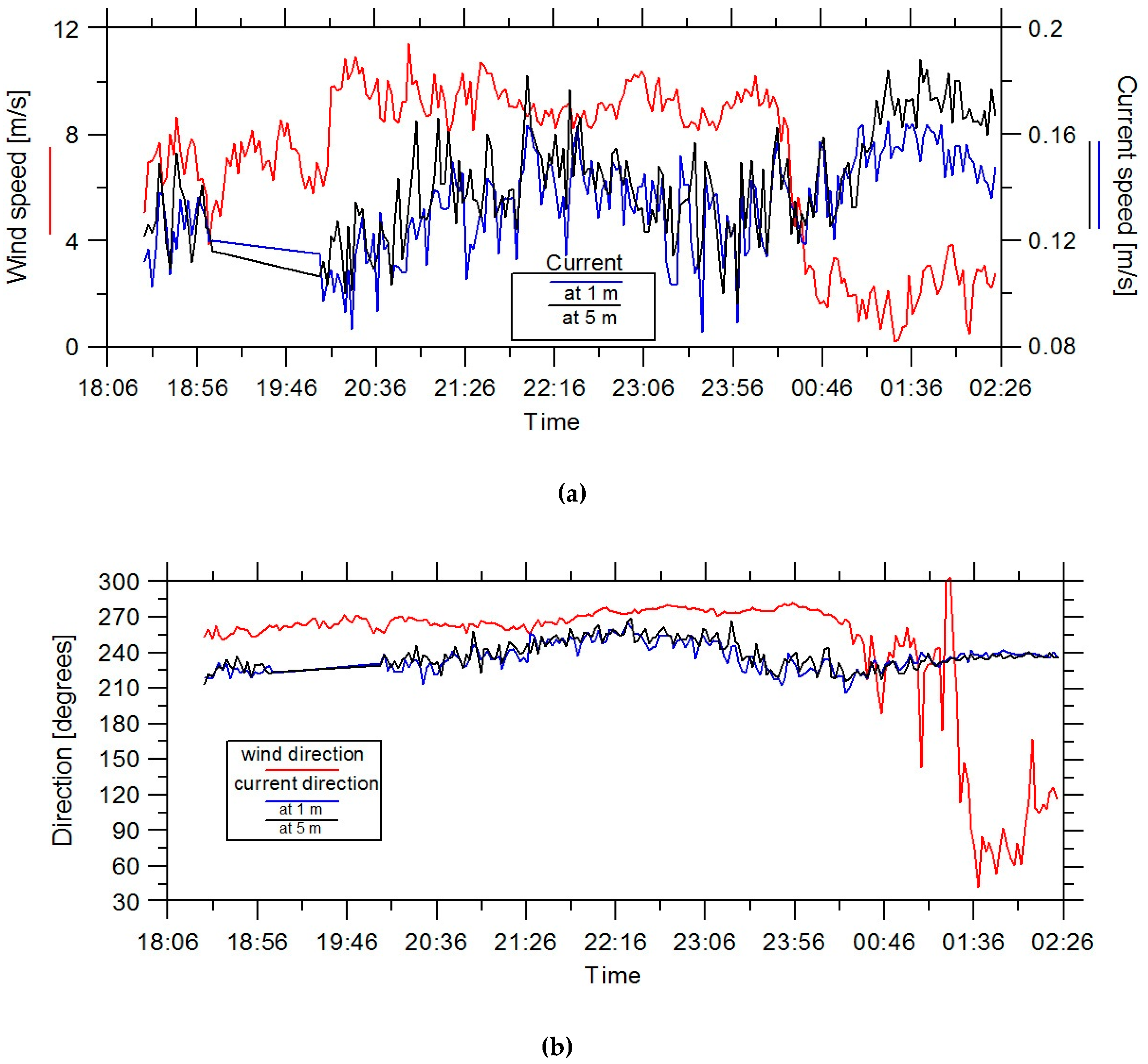
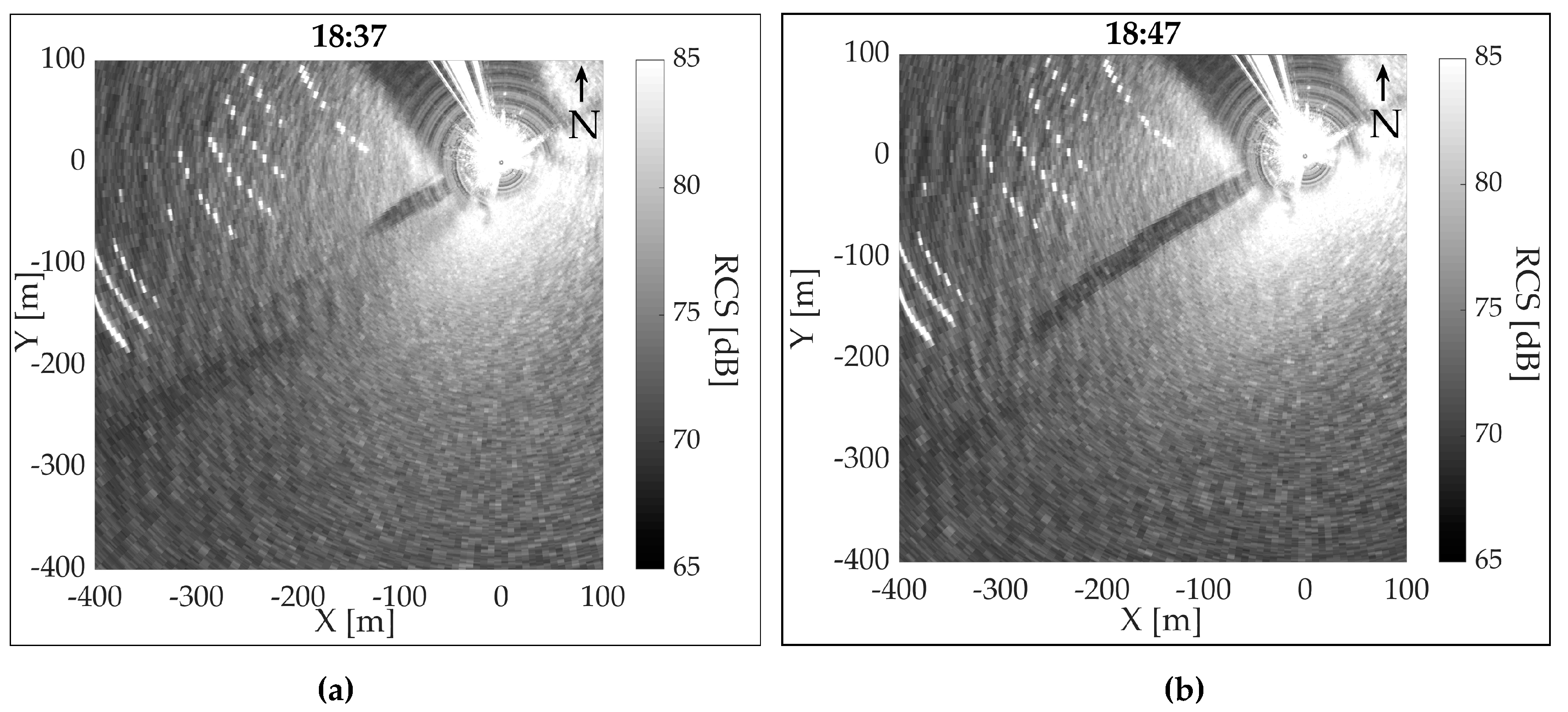
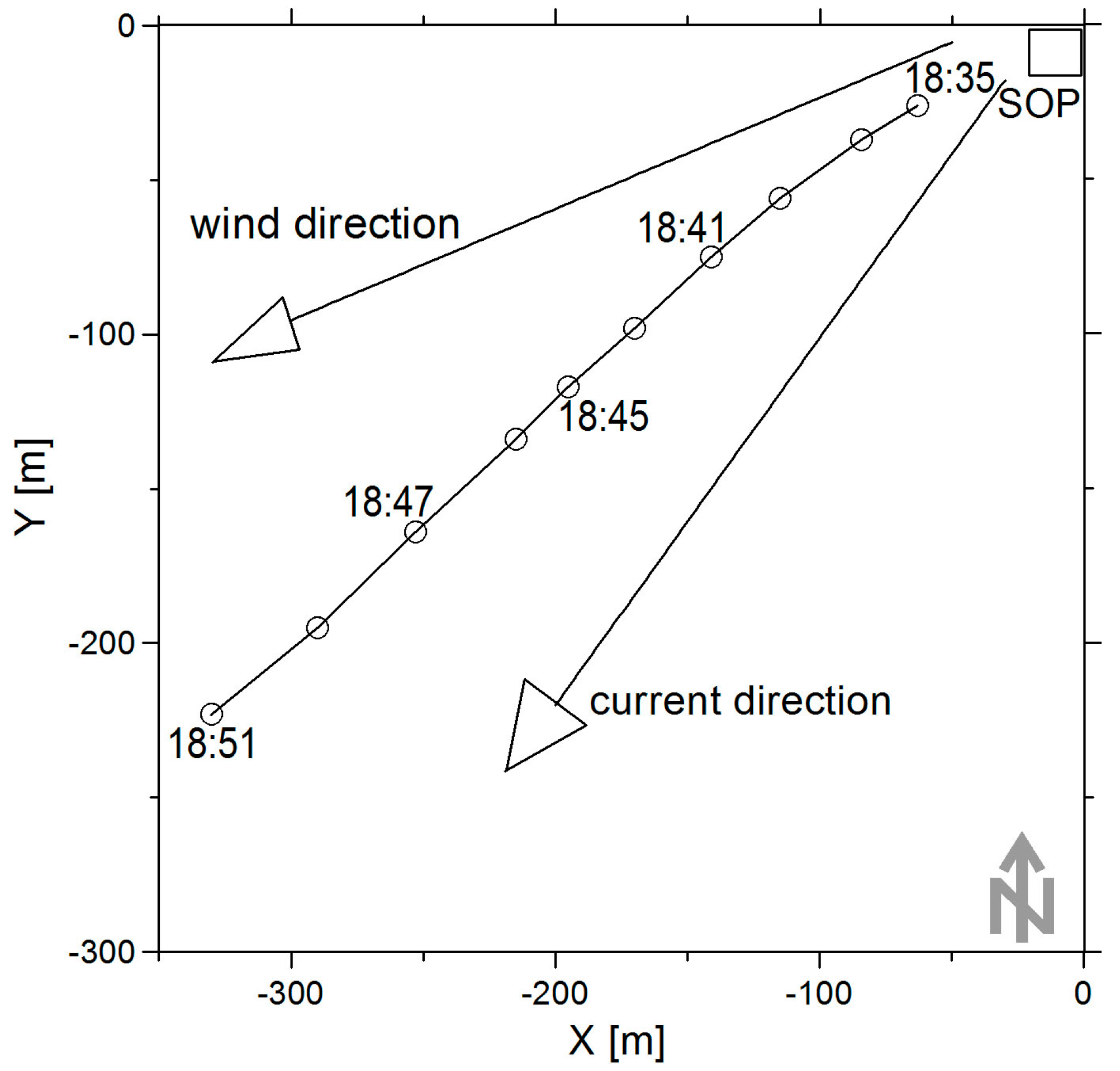
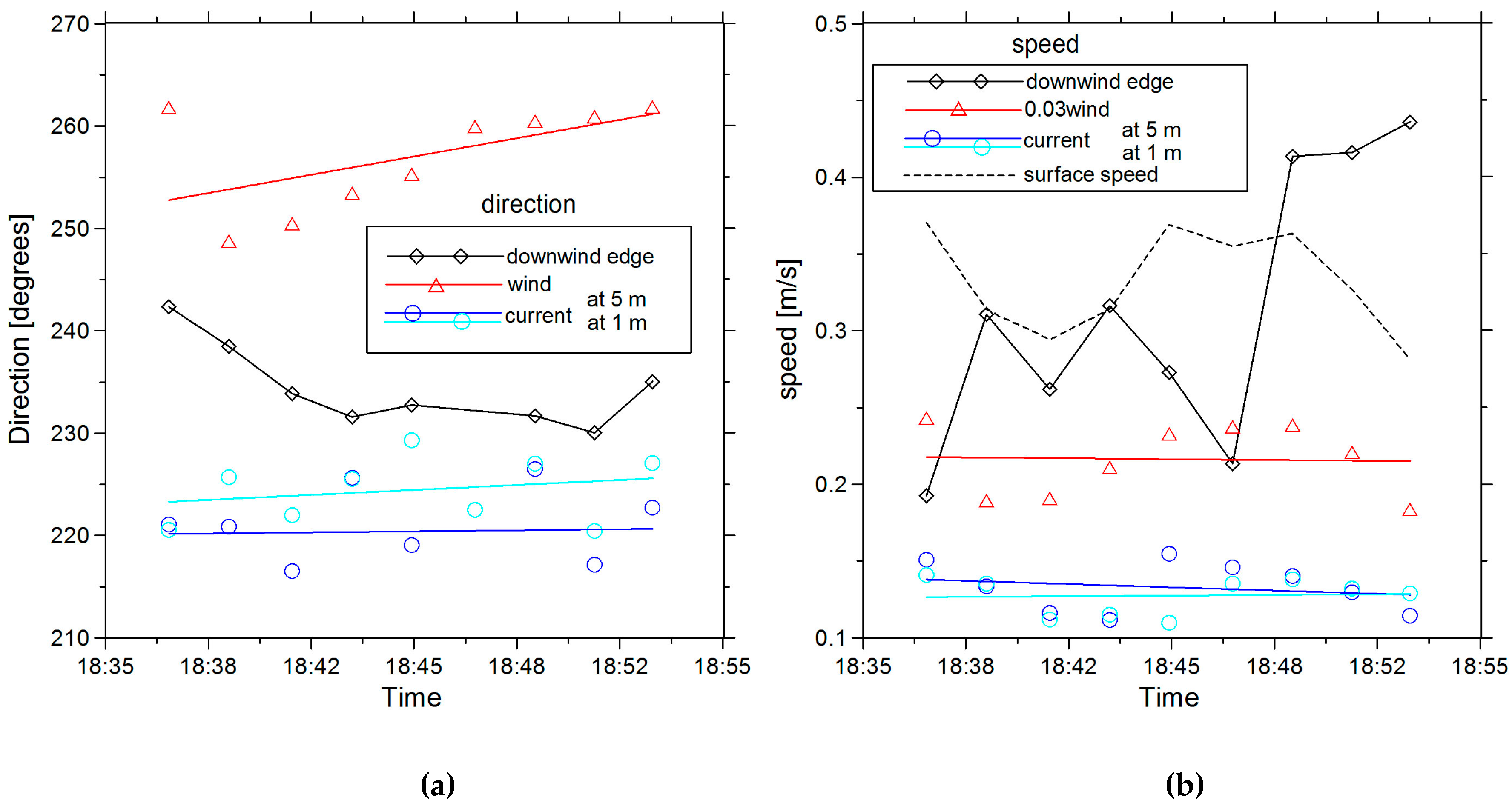
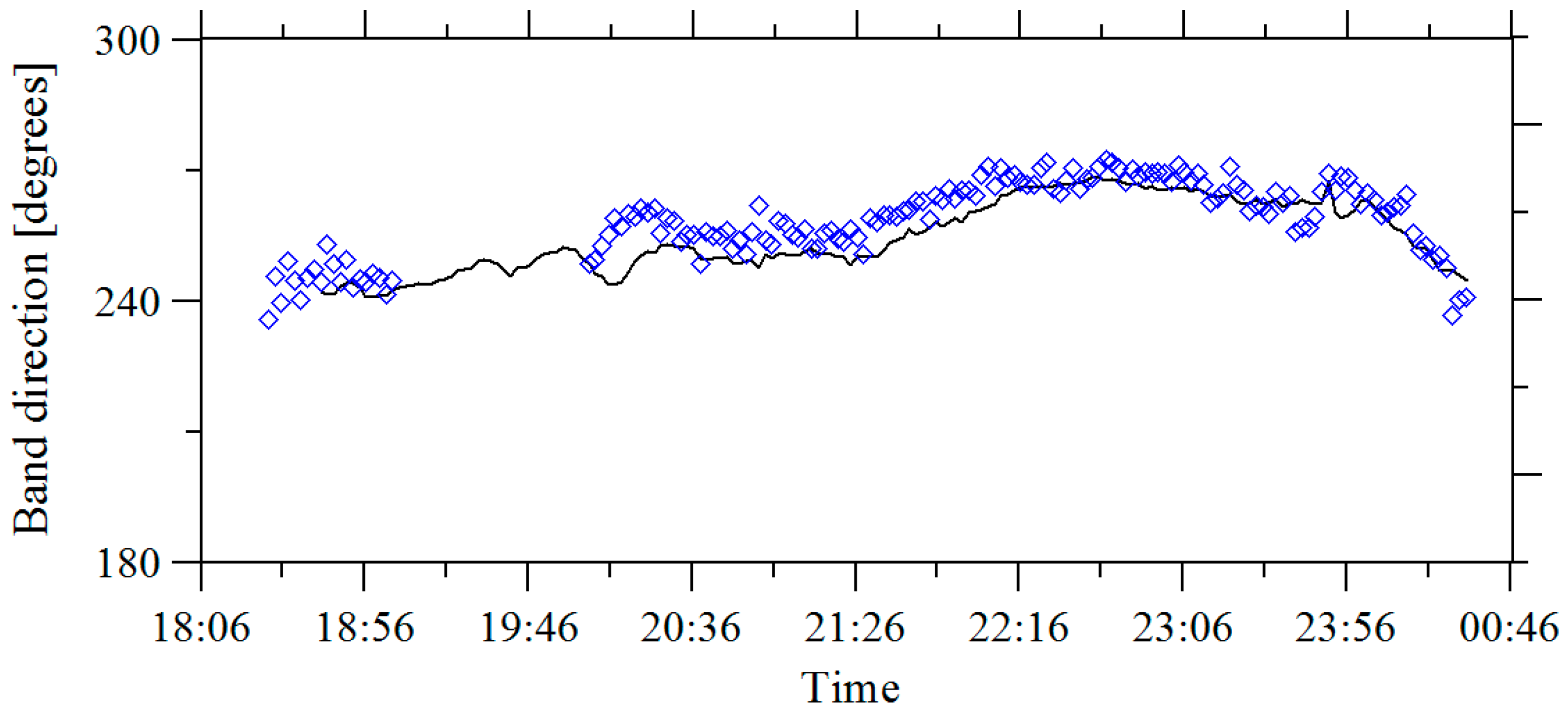
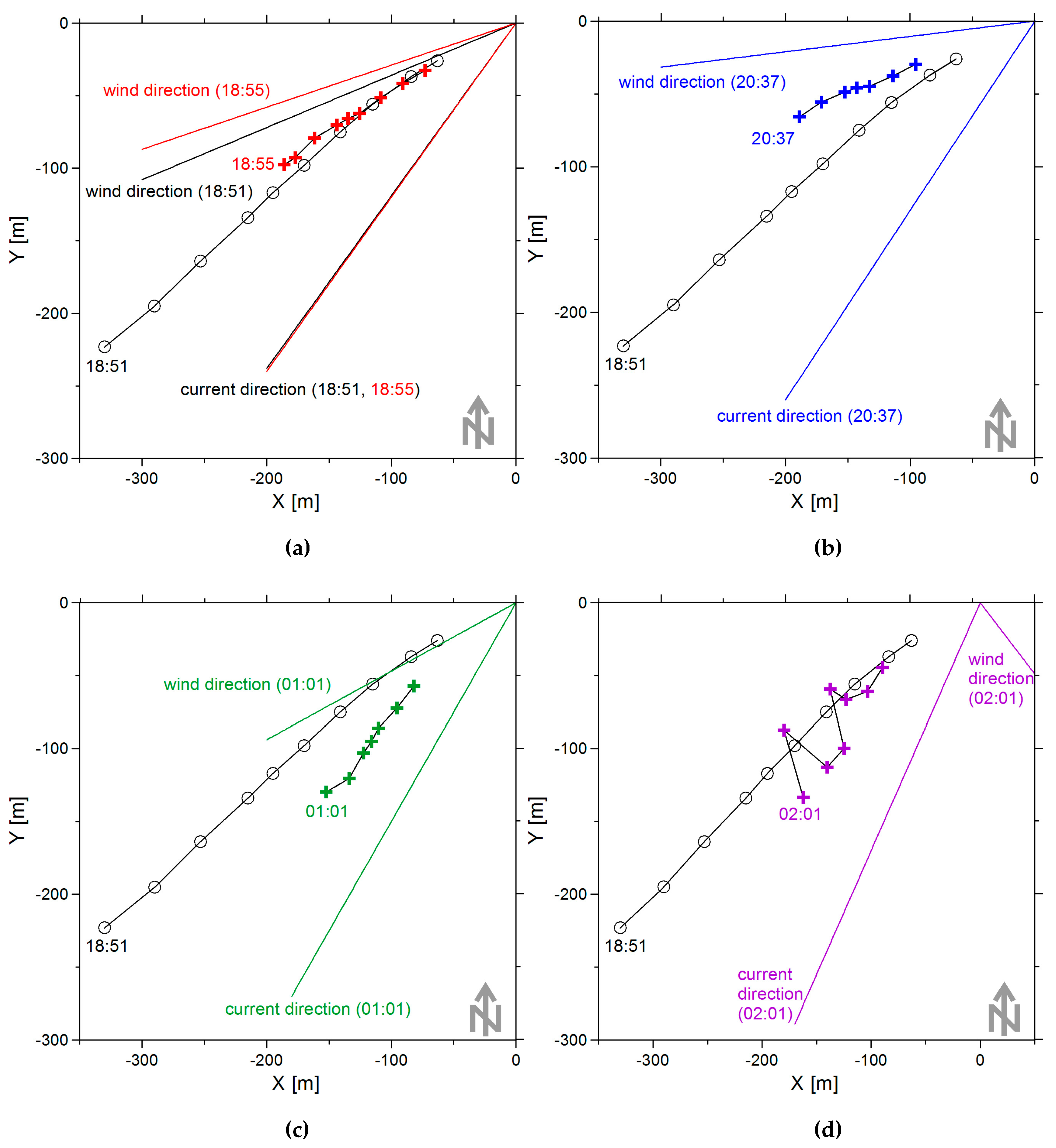
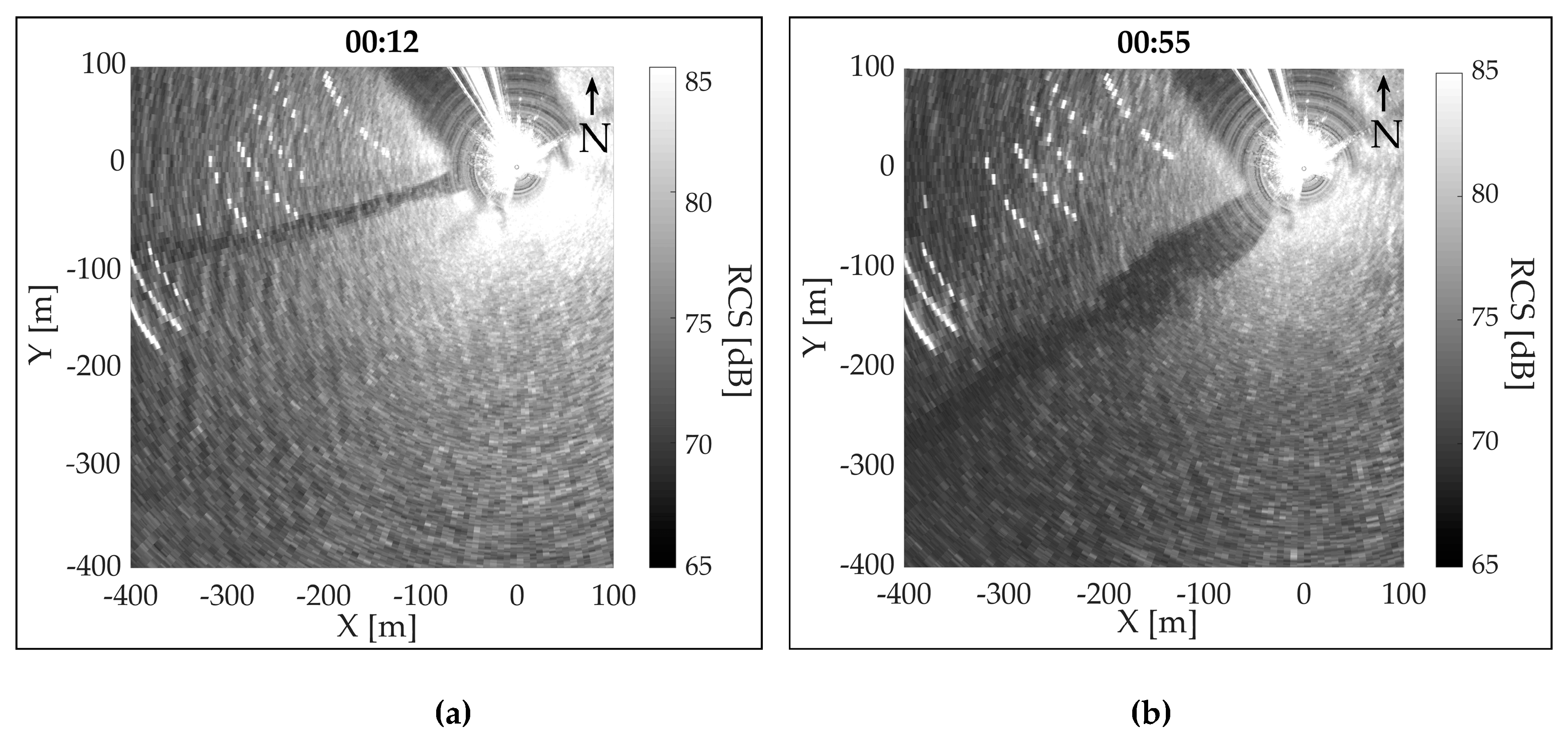
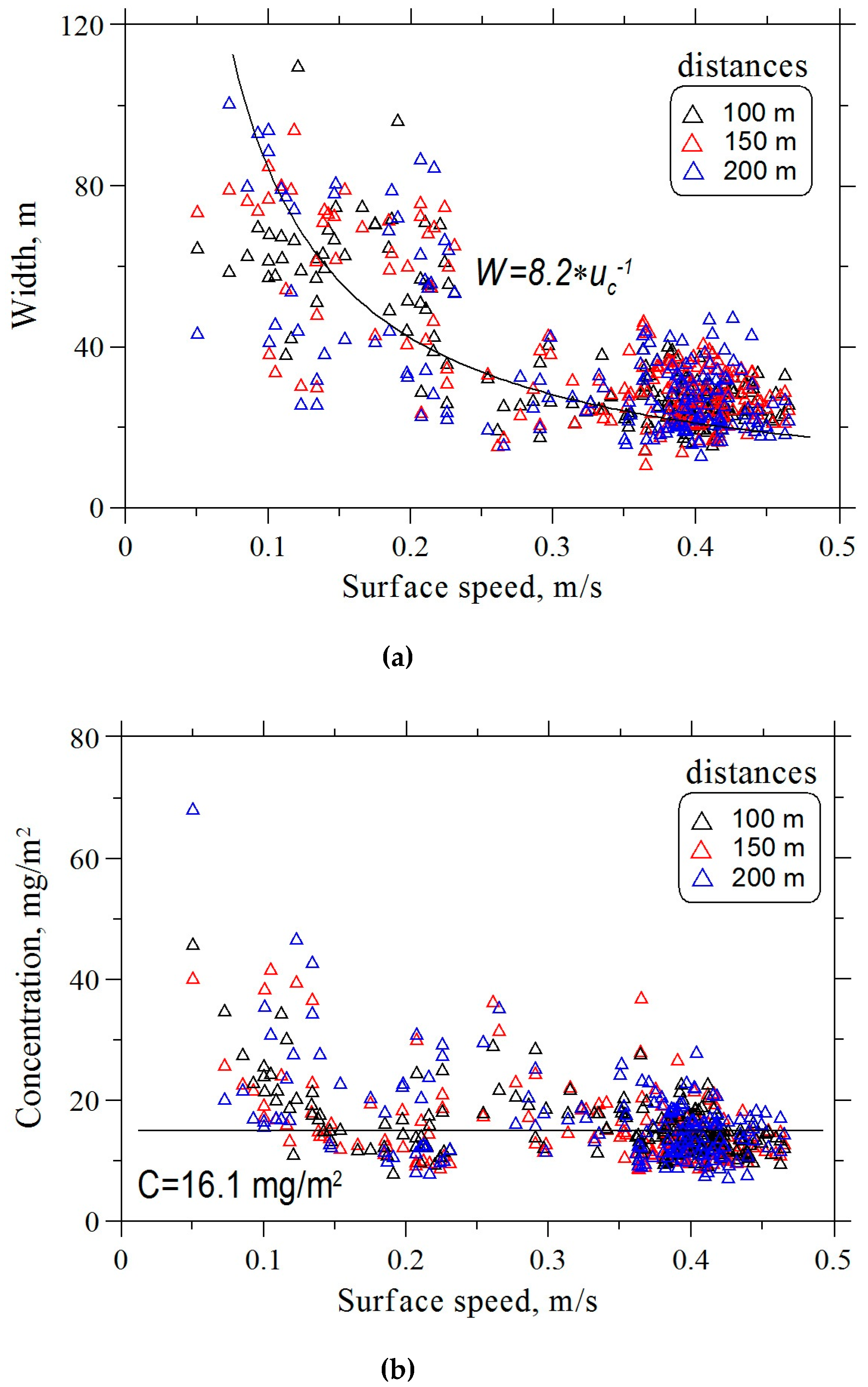
© 2019 by the authors. Licensee MDPI, Basel, Switzerland. This article is an open access article distributed under the terms and conditions of the Creative Commons Attribution (CC BY) license (http://creativecommons.org/licenses/by/4.0/).
Share and Cite
Kapustin, I.A.; Shomina, O.V.; Ermoshkin, A.V.; Bogatov, N.A.; Kupaev, A.V.; Molkov, A.A.; Ermakov, S.A. On Capabilities of Tracking Marine Surface Currents Using Artificial Film Slicks. Remote Sens. 2019, 11, 840. https://doi.org/10.3390/rs11070840
Kapustin IA, Shomina OV, Ermoshkin AV, Bogatov NA, Kupaev AV, Molkov AA, Ermakov SA. On Capabilities of Tracking Marine Surface Currents Using Artificial Film Slicks. Remote Sensing. 2019; 11(7):840. https://doi.org/10.3390/rs11070840
Chicago/Turabian StyleKapustin, Ivan A., Olga V. Shomina, Alexey V. Ermoshkin, Nikolay A. Bogatov, Alexander V. Kupaev, Alexander A. Molkov, and Stanislav A. Ermakov. 2019. "On Capabilities of Tracking Marine Surface Currents Using Artificial Film Slicks" Remote Sensing 11, no. 7: 840. https://doi.org/10.3390/rs11070840
APA StyleKapustin, I. A., Shomina, O. V., Ermoshkin, A. V., Bogatov, N. A., Kupaev, A. V., Molkov, A. A., & Ermakov, S. A. (2019). On Capabilities of Tracking Marine Surface Currents Using Artificial Film Slicks. Remote Sensing, 11(7), 840. https://doi.org/10.3390/rs11070840






